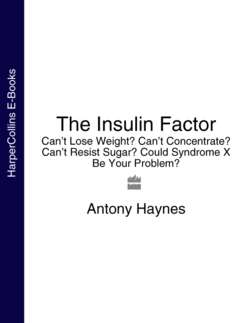Читать книгу The Insulin Factor: Can’t Lose Weight? Can’t Concentrate? Can’t Resist Sugar? Could Syndrome X Be Your Problem? - Antony Haynes - Страница 43
Fibre foods
ОглавлениеJust as starch slows down digestion, so too does fibre. Fibre makes you feel more full, which helps reduce appetite and slows the release of sugar into the bloodstream. It feeds friendly bacteria, carries toxins out of the gut, so unwanted bugs are less able to flourish.
Essentially, there are two kinds of fibre, soluble and insoluble. Soluble fibre absorbs much more water, toxins and even cholesterol than insoluble fibre, and carries them all through the colon for elimination; insoluble fibre provides bulk but can irritate the gut lining, especially when eaten in excess. For example, oat bran, which is a rich source of soluble fibre, can lower cholesterol levels whereas wheat bran, a rich source of insoluble fibre, does not.
| Rich sources of soluble fibre | Rich sources of insoluble fibre |
| Soluble | Wheat bran |
| Fruits | |
| Vegetables | |
| Legumes | |
| Oats | |
| Pectin |
Legumes – which contain plenty of soluble fibre – are a particularly useful source of carbohydrate in the diet. This is because they have a low Glycemic Index and are very insulin-friendly. Unfortunately, some people may find that legumes can cause excess wind, so introduce them gradually into your diet. If, however, the problem persists it may be due to a lack of digestive enzymes and you may need to either avoid them altogether or reduce the volume of legumes eaten and instead consume more starchy vegetables.
In some countries legumes are a staple; however, in the West they are not as common – with the exception of tinned baked beans. So, instead of opting for de-natured, often sugar-loaded, baked beans why not try some of the following:
| Aduki beans | Butter beans |
| Black beans | Chickpeas |
| French green beans | Mung beans |
| Haricot beans | Navy beans |
| Lentils/Split peas | Pinto beans |
